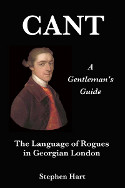APPENDIX I
Description of Newgate.
Anciently, the City of London was encompassed by a wall, in which, at proportionate distances, were several gates, with posterns, resembling the gate which still remains, called Temple Bar. The exact period of time when Newgate, or, as it was first called, the New Gate was erected it is not easy to determine; but we find that as early as the year 1211, its apartments were used for the confinement of felons, as a county gaol for London and Middlesex. This gaol was re-edified in 1422, by the executors of Sir Richard Whittington, and afterwards rebuilt with greater strength and more convenience for prisoners, and with a gate and postern for passengers. The prison then crossed the west end of Newgate Street. In 1780, Newgate was almost burnt down by the rioters. It has since been restored, and now presents a fine uniform exterior to the west, consisting of two wings, the debtors' and felons' side, with the gaoler's house in the middle.
The north side, appropriated to debtors, men and women, consists of two court-yards, which are far too circumscribed for the inhabitants; the men's court being only 49 feet by 31 feet; the women's of the same length, and about half the width. They are entirely surrounded by the wards, which rise three stories above the pavement. The women debtors are separated from the men by a wall 15 feet in height.
The four sides are called the master's side, the cabin, from the cabin bedsteads in them, the common side, and the women's side. The men's apartments are fourteen in number; all of which, except one which occupies in length the whole side of the prison, are nearly of the same dimensions, 23 feet by 15. The number of inhabitants in the rooms is from 12 to 20 in each. The largest room is sometimes inhabited by as many as thirty. The Debtors' side almost always contains 200 and sometimes as many as 300. The painted-room, as it is called -- having been painted by a prisoner -- has been occupied by a debtor ever since the prison was repaired; This apartment also serves the purpose of a room for case of conscience debtors. Two very close rooms are inhabited by prisoners, one at the bottom of the master's, and another of the common side, which serve the purposes of chandlers' shops by day, and sleeping-rooms by night. This side is always too full, indeed it is difficult to conceive how the prisoners exist, crowded as they generally are, and breathing the same polluted air; for even the windows only open towards the prison court.
Women debtors have two rooms, one on the whole side length of the debtor's court, the other much smaller; in these the inhabitants are generally not very numerous, though some times they are crowded. Debtors on the poor and women's sides have eight stone of beef weekly, without bone, sent in by the Sheriffs. Debtors on the master's side pay thirteen shillings and sixpence, eighteen pence of which is spent in beer; the remainder goes to the ward, and finds coals, candles, wood, mops, brooms, and pails. Those who plead poverty are to keep the rooms clean.
On the south side which properly belongs to felons, not only felons, but offenders against government, libellers, sellers of libels, and persons for small offences, are confined. This court is rather larger than the men debtors': the rooms are in general in good condition, being often let as single rooms to prisoners who can afford to pay for such an indulgence. There are also four other small yards in which felons are lodged, the number of the whole varying from 140 to 300.
The chapel is plain and neat, with galleries on each side; three or four pews are appropriated for the felons; that in the centre is occupied by the condemned. Service is performed by the chaplain twice every Sunday.
Malefactors under sentence of death are secured in cells built expressly for that purpose; there are five upon each of the three floors, each vaulted, in height about nine feet to the crown of the arch, and about nine feet in length, by six in width. In the upper part of each cell is a small narrow window double-grated. The doors are four inches thick. The strong wall is lined all round with planks, studded with broad-headed nails. In each cell is a barrack bedstead. It is observed, that prisoners who had affected an air of boldness during their trial, and appeared quite unconcerned when sentence was pronounced on them, were struck with horror, and shed tears, when they were brought to these dark and solitary abodes.
Condemned felons are executed in front of the prison, on a large moveable scaffold, (called the New Drop,) which is kept in the Press Yard for this occasion. The malefactors stand upon a false floor, and when their devotions are finished, on a signal being given, the floor suddenly drops, leaving the unhappy sufferers suspended in the air.

